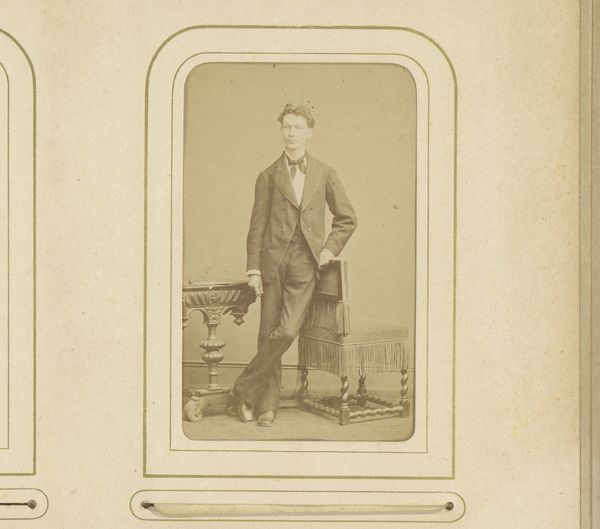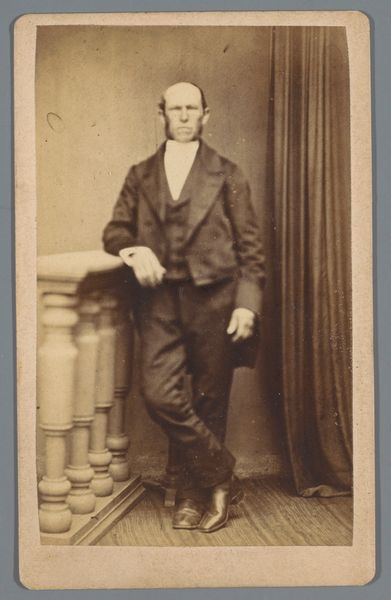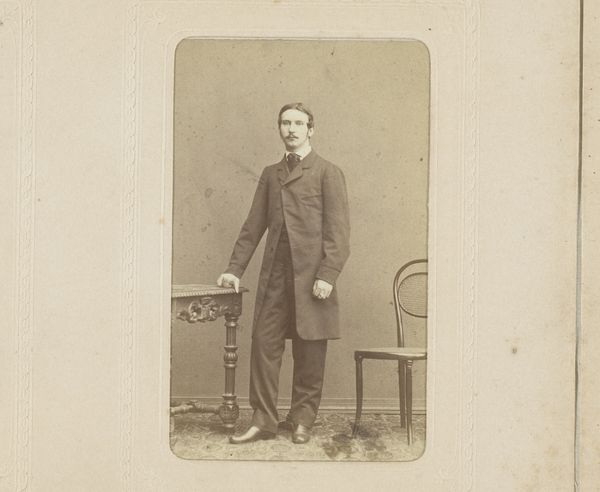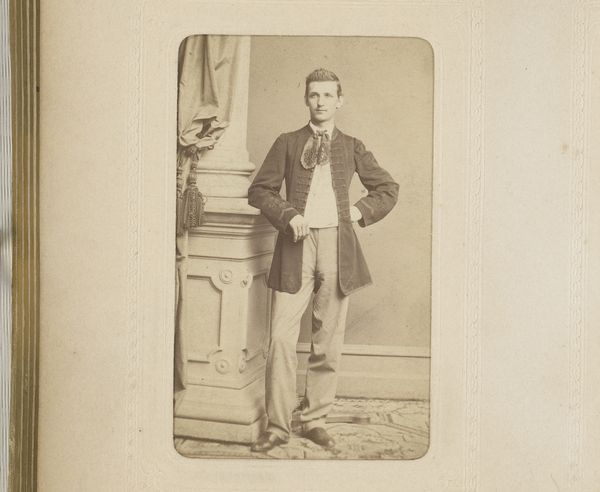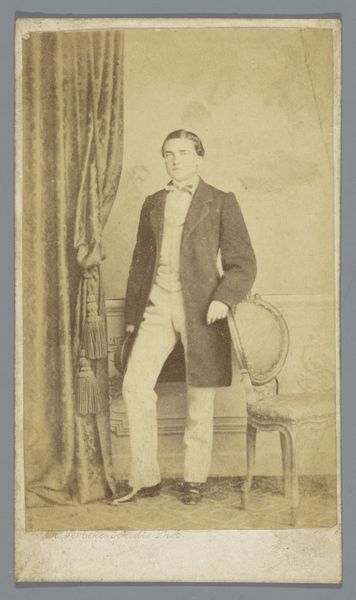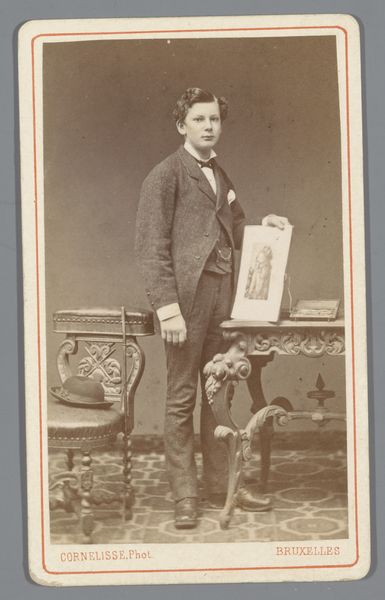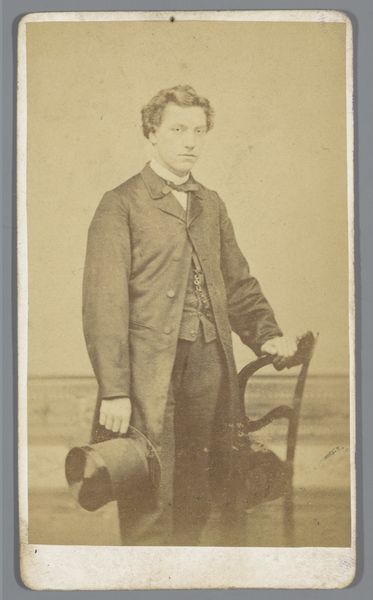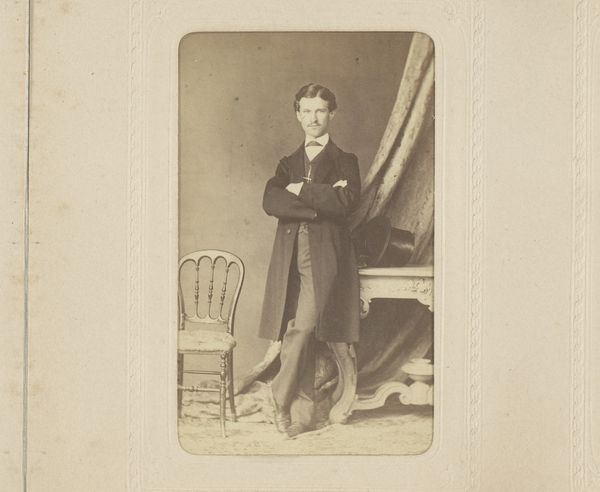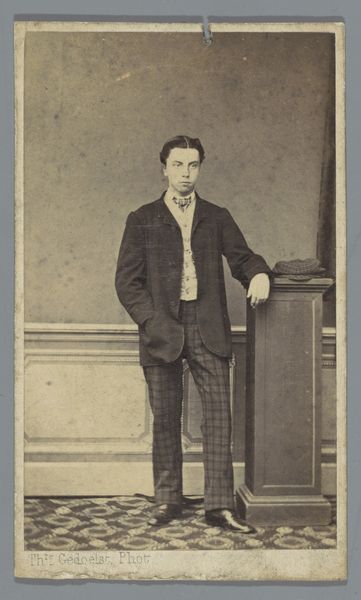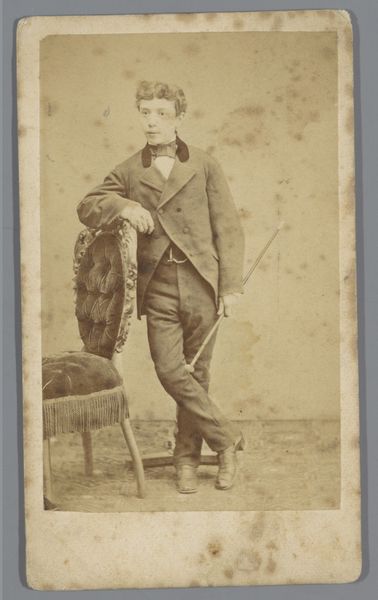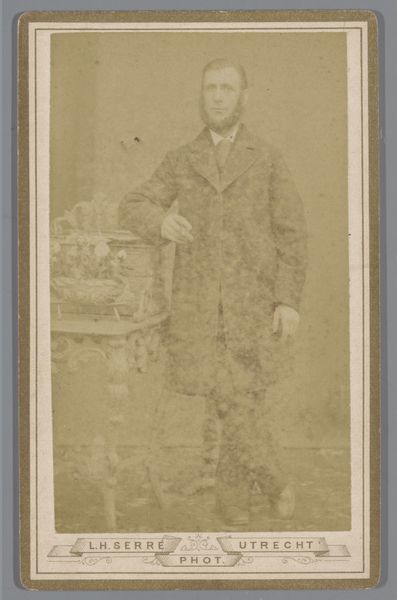
Dimensions: height 99 mm, width 59 mm
Copyright: Rijks Museum: Open Domain
Curator: I’m struck by the formality of this photograph. The subject, A. Toullet, presents himself with such deliberate composure. Editor: There is a vulnerability that contradicts this very same attempt at self-presentation, if you look closely. It's like he is playing a part, almost shyly enacting a role he's not quite comfortable in. Curator: You notice that even though the photographic process flattens dimension and aura, the arrangement still draws from the well of Romantic portraiture conventions. He is positioned next to a decorative chair as a column of status, draped cloth behind hinting the interior setting of the portrait, which becomes emblematic of the internal. Editor: The rigid class performativity is palpable. I wonder about A. Toullet’s actual life beyond this curated image of respectability. What freedoms or limitations did he experience within this particular intersection of class, gender, and historical moment? The material conditions inherent in getting such a photograph taken must have involved money and status. Curator: Indeed. And yet, consider the wider circulation of such images at the time. Photography, in its relative affordability compared to painted portraiture, enabled a broader section of the middle classes to participate in image-making and to archive family and personal memory. These albumen prints democratized notions of identity and visibility to an extent that had never happened before. Editor: To an extent, sure, but the act of photography, the pose struck, the very preservation of this image screams privilege to me. The gaze feels complicit, as if we are meant to accept this display of status without question. Perhaps the plaid vest worn by the sitter could suggest at once an assimilation to bourgeois codes, yet equally signal a mode of self-differentiation and even dandyism. Curator: The plaid pattern could be read in that way! What resonates for me is how an image like this acts as a time capsule, holding the residue of a specific historical context. The pose, the clothing, the backdrop... each a signifier that tells a story about its subject, about his aspirations, about his social place. Editor: Yes, and by critically examining those signifiers, we can dismantle the myth of a singular history and allow for more nuanced interpretations that recognize power dynamics. That plaid vest you mention is fascinating and worth researching! Curator: Definitely. This photograph encapsulates a moment in time when identity, representation, and social status were rapidly evolving, prompting us to keep interrogating and challenging. Editor: Agreed. Each layer peeled away brings us closer to a more equitable understanding of that era.
Comments
No comments
Be the first to comment and join the conversation on the ultimate creative platform.
